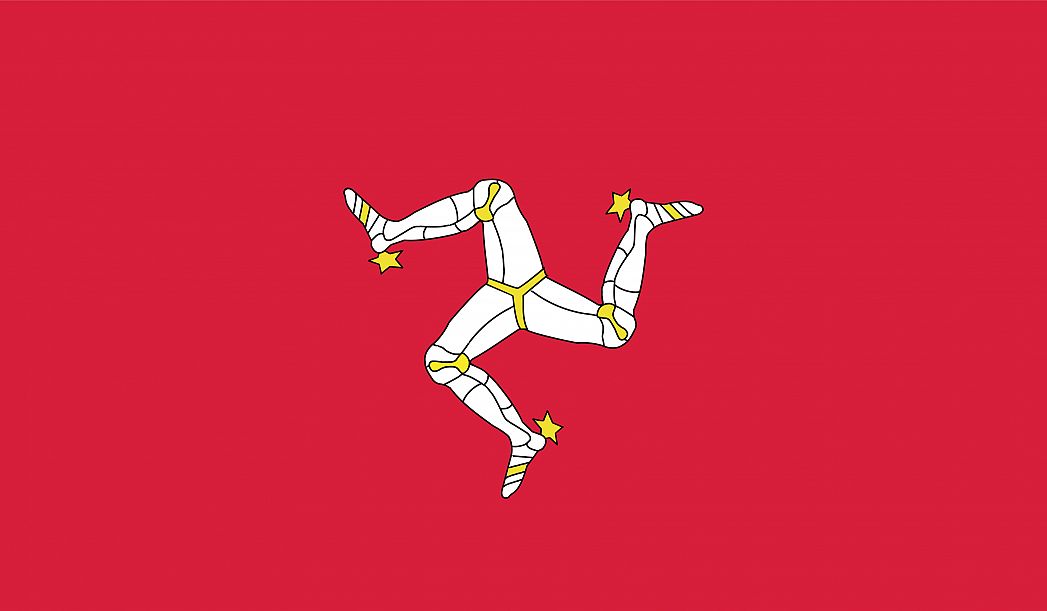The flag of the Isle of Man is made up of a triskelion implanted centrally on a red background. The triskelion comprises of three armored legs, each having a golden spur. This flag’s official name is the Flag of Mann. The origin of the triskelion dates back to the 1300s, having been an ancient symbol of the Lycians and the Mycenaeans. It was first adopted by the island on December 1, 1932, before which the official flag of the country had been the Union Jack.
The origin of the design of the flag of the Isle of Man is not known. The design of the triskelion, which is made up of three protected legs with golden offshoots on the heels, draws its inspiration from the Manx coat of arms which originated in the 13th century. It is not really known why the legs were chosen, aside from their distinctive appearance.
The red color on the flag’s background is a symbol of strength, valor, hardiness, and bravery. The triskelion at the center of the flag consists of three armored legs referred to as “ny tree cassyn” ("the three legs") in the historical language of Manx. This symbol originates from the Lycians and the Mycenaean, dating back to the 13th century. The three armored legs are an armorial representation of the three native kings of Isle of Man, including the Hebrides of the Western Isle of Scotland. The triskelion symbolizes the sun, a seat of power and life.
The flag of Mann was officially adopted on December 1, 1932. Before its adoption, the official flag of the island had been the Union Jack. This is the national flag of the United Kingdom. It appears in the upper left-hand quarter of flags of some former British dominions. The Union flag symbolized the union of Great Britain and Ireland. The Union Jack is a unification of three older national flags of the white satire of Saint Andrew for Scotland, counterchanged with the red cross of Saint George of the Kingdom of England and over all the red satire of Saint Patrick which represents Ireland.
This page was last modified on May 1st, 2018
More on Graphicmaps

Published on 2019-11-06
What is a Trade Embargo?

Published on 2019-11-04
Which Two Countries Used to Have the Same Flag?

Published on 2019-09-16
What Is the Only Two-Sided State Flag?

Published on 2019-09-16
Which Country Flag Looks Like the Texas Flag?

Published on 2019-08-29
Flags That Resemble the US Flag

Published on 2019-08-20
